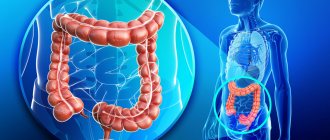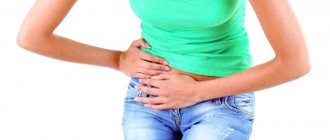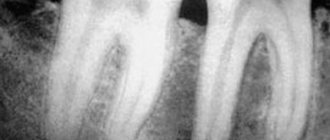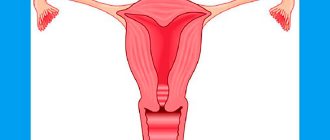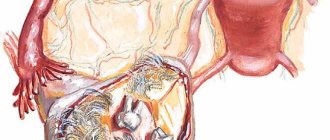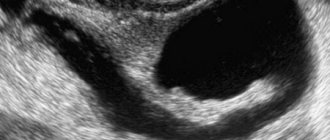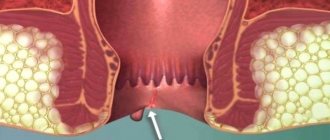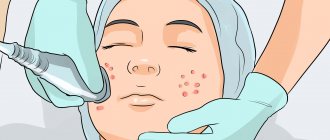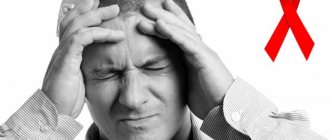Any lump or small lump near the anus is a symptom of disturbances in the intestinal tract, which should be addressed by a specialist. Unfortunately, not many can overcome their innate shame and end up with painful complications and health problems. Such a nodule often occurs during exacerbation of hemorrhoids, chronic constipation, is a tumor or an ordinary benign wen. If you start treatment in a timely manner, you can quickly forget about discomfort.
The main reason for dense formation
When a person develops a small, round lump in the anus, the symptoms accompanying this process are of great importance. If the patient complains of a burning sensation inside the intestines, nagging pain and itching, we may be talking about an exacerbation of hemorrhoids. It is the seal near the anus that is the external manifestation of this disease. It's called a hemorrhoid and indicates serious damage to the blood vessels inside the intestine.
In recent years, there has been a sharp increase in the incidence of this type of varicose veins. Doctors attribute this to the gradual increase in body weight in people living in big cities and their sedentary lifestyle. Due to lack of movement and physical activity, the veins in the pelvis are constantly stretched and experience overload due to prolonged exposure to a “sitting” position. Additionally, common causes of hemorrhoids are:
- constant constipation due to dysbiosis or poor nutrition;
- gastrointestinal diseases;
- congenital pathologies of the circulatory system;
- hormonal problems;
- obesity.
In each case, the factors that influenced the appearance of compaction and the development of the disease are purely individual and require study. In men, the risk of developing hemorrhoids increases when working as a driver in a permanent sitting position, carrying heavy loads or engaging in popular bodybuilding. Women come to see a proctologist after a difficult period of bearing a child or complicated childbirth. The problem is caused by prolonged stressful situations that negatively affect the health of the intestines and the whole body.
External hemorrhoidal node
An inflamed external hemorrhoid is a common manifestation of hemorrhoidal pathology. With external hemorrhoids, blood clots appear, causing pain and bleeding in a person.
Inflammation of the nodes can last for many months
Hemorrhoids are usually divided into external and internal diseases. They can appear simultaneously when pathology manifests itself in the external or internal cavernous plexuses. But the development of the disease can also be found in a separate form. A manifestation of pathology often occurs in the case of damage to external hemorrhoids.
The disease often occurs during pregnancy and after childbirth, after heavy physical exertion, frequent constipation and prolonged sitting.
If an external hemorrhoid is troubling, treatment should be started immediately!
The disease quickly becomes chronic, and then complications appear.
These nodules are located along the edge of the anus. They consist of small veins located in the subcutaneous layer that provide blood flow to the anal opening. These veins are located in close proximity to the subcutaneous part of the external sphincter.
Lump in the anus: is hemorrhoids always to blame?
If you find a soft tubercle near your anus, you should not make a diagnosis yourself and use medications on the advice of friends. Only in 90% of cases is it a hemorrhoidal plexus. The remaining 10% are due to no less serious inflammatory processes that have similar symptoms and resemble hemorrhoids:
- an abscess or fistula in the anus;
- blockage of the crypt sinuses in the lower intestine;
- anal fimbriae;
- paraproctitis;
- tumors of any origin.
In rare cases, the cause of compaction under the skin in the anus is bulging of the anal papillae due to intra-abdominal pressure. This is not a separate disease, but rather a consequence of problems with bowel movements. It occurs with chronic constipation, when the patient has to constantly push.
In most cases, the listed diseases are interrelated or result from an exacerbation of hemorrhoids. For example, paraproctitis or purulent fistulas often accompany an advanced form and occur when bacteria enter hemorrhoidal cones. Sometimes the lump is completely under the skin layer, so a correct diagnosis can only be made using a rectal examination.
Description
Rectal condylomas resemble hemorrhoids in appearance, as they form in the form of nodules. They grow in the perianal space or in the lumen of the intestine itself. The growths can be single, but of different sizes - from small to large. There can be many manifestations. In this case, they form a large conglomerate with sharp ends. Anal papilloma appears as a consequence of intensive viral cell division through mitosis, which causes the growth of the epidermis and dermal papillae.
The causative agent of condylomas is papillomavirus, which has the ability to live for a long time in the tissues of the human body, remaining active. This pathogenic microorganism is transmitted through close contact with the skin of an infected person, or less commonly through sexual contact. The danger of the disease lies in the possibility of transformation of simple growths into cancer with metastasis to other organs.
At the beginning of the disease, a small node grows in the mucous epithelium of the intestine or on the skin of the perineum. Since in most cases the first type of condylomas occurs, sigmoidoscopy is prescribed as a diagnostic method.
After entering the body, the virus accumulates in the lower layer of the epidermis. Any amount of time can pass before the first symptoms appear - from 7 days to several years. The virus lives in the skin and mucous membranes of the epithelium. After activation, the papillomavirus begins to multiply instantly. As the number of mature cells increases, the virus begins to move closer to the surface, which is what causes growths. In this phase, the person is a carrier of the disease.
Symptoms of exacerbation of hemorrhoids
A hemorrhoid is a section of a blood vessel that is damaged and severely distended due to increased pressure. A small pouch forms on its wall. As blood passes through it, some of the fluid is retained and thrombosis accumulates. A lump forms in this place, which protrudes under the skin at the anus.
If the nodule can be easily felt by palpation or hygiene, and is easily diagnosed visually, we can talk about the external form of the disease. Its development is accompanied by the following symptoms:
- acute pain when passing stool through the sphincter;
- pulling sensations when sitting or walking;
- burning in the anus;
- unbearable itching, which intensifies before defecation;
- bleeding in the toilet or on underwear.
Typically, pain and itching are not felt when hemorrhoids are in remission. Their appearance means that he has entered the acute stage and requires immediate treatment. The lump in the lower intestine may become pinched by the sphincter muscles or rubbed against clothing. This leads to complications and threatens with painful consequences.
Preventive measures
It is necessary to avoid dehydration and drink enough water when lumps appear near the anus. Enrich your daily diet with plenty of fruits and vegetables.
When taking dietary supplements, you should drink at least 8 glasses of water per day to avoid constipation. After defecation, it is better to use a bidet or shower, as toilet paper can cause irritation near the anus.
How to get rid of a lump in the anus
The specifics of treatment depend entirely on the cause of the formation of swelling near the anus. If a diagnosis of paraproctitis or infectious inflammation is made, surgery and thorough cleaning will most likely be performed. When the crypt sinuses are blocked, the proctologist strengthens and stitches them using special staples. Bulk anal fimbriae should also be removed to prevent bacteria from accumulating after bowel movement.
Long-term treatment is required when external hemorrhoids are detected in a person. If the compaction is disturbing and continues to increase in volume, it is necessary to act on it from all sides:
- Strengthen blood vessels from the inside with the help of special venotonics: Phlebodia, Venarus, Troxerutin. They contain herbal extracts, vitamins and amino acids that gradually restore the elasticity of veins and capillaries. They are taken in a course of at least 2 months for the best effect.
- Rectal suppositories with heparin or analgesics help to stop irritation, relieve itching and pain: Gepatrombin, Relief, Anestezol, Anuzol, Procto Glivenol. You can use more natural candles with belladonna, calendula or sea buckthorn extract.
- From the outside, they also strengthen damaged vessels and nodes with the help of light absorbable gels: Troxevasin, Troxerutin, Nigepan or Heparin. They lubricate not only the bump itself, but also treat the skin around it. This helps improve blood circulation and prevents the hemorrhoid from forming again.
In case of exacerbation, the course of treatment averages 10–14 days. During this period, the seal in the anus decreases in size and ceases to bother and itch. The patient does not observe streaks of blood on the toilet and feels more comfortable at the time of emptying.
Treatment of rectal diseases
A proctologist treats diseases of the rectum. The treatment strategy is developed taking into account the characteristics of the clinical picture, existing risks and the general condition of the patient. To do this, the patient will need to undergo one or more diagnostic examinations, stool, urine and blood tests, based on the results of which the final decision will be made.
In case of minor damage to the rectum (for example, an anal fissure) or temporary inflammation of its mucous membrane as a result of poor nutrition, the patient is prescribed medications and a special diet, that is, treatment is carried out using a conservative method.
In the presence of benign or malignant neoplasms, hernias and purulent abscesses, and other serious diseases leading to destruction and necrosis of rectal tissue, operations of varying complexity are performed. Thus, the treatment method directly depends on the diagnosis made by the proctologist. But a person can avoid radical surgical interventions - to do this, it is necessary to seek medical help in time in order to cure the pathology at an early stage of development.
Surgical methods for removing hemorrhoids
Sometimes a person seeks qualified help too late and the venous plexus does not resolve even after potent drugs. If a dense lump turns red, constantly hurts and twitches, it is better to agree to have it removed by a proctologist. Modern techniques make it possible to do this in just one day with a minimal rehabilitation period. Among the current methods:
- laser excision;
- gluing the inflamed vessel using sclerotherapy;
- squeezing with a thin latex ring, which completely stops blood circulation.
In particularly severe situations, the patient has the hemorrhoidal seal removed using a scalpel. This complex operation allows you to restore the function of the sphincter muscles and remove all pouches and cracks.
Hemorrhoidal thrombosis or “bump” in the anal area
Quite often there are situations when a person feels a painful “bump” in the anus. As a rule, such patients already know first-hand what hemorrhoids are, but they are in no hurry to see a doctor. We are talking about thrombosis of the hemorrhoidal node, which in most cases is an exacerbation of chronic hemorrhoids. The fact of the appearance of so-called acute hemorrhoids finally pushes a person to turn to a proctologist with a request for help, although this should have been done much earlier. However, it is not uncommon for a “bump” to appear completely unexpectedly, causing panic in its “owner.” The main thing here is not to make a mistake, not to “pull the cat by the tail,” but to ask the doctor of the required specialty all the questions you are interested in.
Prevention of hemorrhoid formation
Unfortunately, none of the proposed surgical methods guarantees complete recovery. If the whole rhythm of life does not change, painful nodes will again appear in the perineum and will bring a lot of unpleasant moments. The main rule of prevention is to find a balance between a balanced diet and physical activity. To improve peristalsis, you should follow the recommendations:
- eat more vegetables and cereals, dairy products;
- do gymnastics, dance, walk with friends in the park more often;
- Drink clean water, reduce the amount of coffee and sugary drinks.
It is necessary to combine drug treatment and traditional recipes, and do not forget about regular visits to a specialist for monitoring. This approach will allow you to maintain intestinal health for many years and live comfortably with this unpleasant disease.
What it is?
Early symptoms of hemorrhoids include a lump that forms near the anus of a man or woman. Especially if, in addition to the lump, there is bloody stool, severe burning or itching in the anal area. But the lump does not always act as a precursor to hemorrhoids. Often this symptom may indicate the development of paraproctitis or thrombosis of the hemorrhoid.
Such a growth in the anus may also indicate the development of cancer, genital warts or perianal papilloma. These probabilities cannot be excluded. But, as noted earlier, a small bluish formation that appears in the anus, as a rule, indicates the development of hemorrhoids (this is one of the first symptoms of this pathology).
Popularly, such bumps near the anus are called balls or growths, but doctors usually call them venous nodules. These formations are filled with blood, and the size of the cones can vary depending on the level of fullness. The development of hemorrhoids at the last stage is accompanied by a significant expansion of the veins in the rectum. This pathological phenomenon poses a great danger to the patient’s health, since, unfortunately, it is impossible to return the normal state of the affected area.
As practice shows, the cause of the appearance of a lump or growth is increased pressure in the blood vessels of the patient's rectum, but there are other causative factors.
Goals of diagnosis and therapy
An accurate diagnosis can only be made by a qualified proctologist after the results of a comprehensive examination. On your first visit, he will examine the features of your colon and lumps. A visual examination allows you to exclude or confirm oncology of the anus, identify fistulas and other pathologies of the mucous membrane near it.
If the information received is insufficient to determine treatment, the specialist additionally sends the patient for anoscopy. It should be remembered that before visiting a proctologist, it is advisable to do a cleansing enema and carry out all the necessary hygienic measures regarding the anus.
Why is a lump near the anus dangerous?
Hemorrhoids may subside for a while and are characterized by frequent periods of exacerbation. The patient notices that the ball in the anus is very inflated. It begins to react painfully to touch with a finger or underwear, bakes and whines when a person is nervous or plays sports. This cannot be ignored, lest you encounter more dangerous problems:
- suppuration of the subcutaneous tissue of the anal zone;
- the formation of a fistula due to the accumulation of feces;
- blockage of the crypt sinuses;
- thrombosis.
Conventionally, proctologists divide hemorrhoids into several stages. The most problematic are the third and fourth, in which it is difficult for a person to do usual activities and he has to give up active recreation and many pleasures. If left untreated, the disease becomes chronic, when the ball is removed only surgically.
